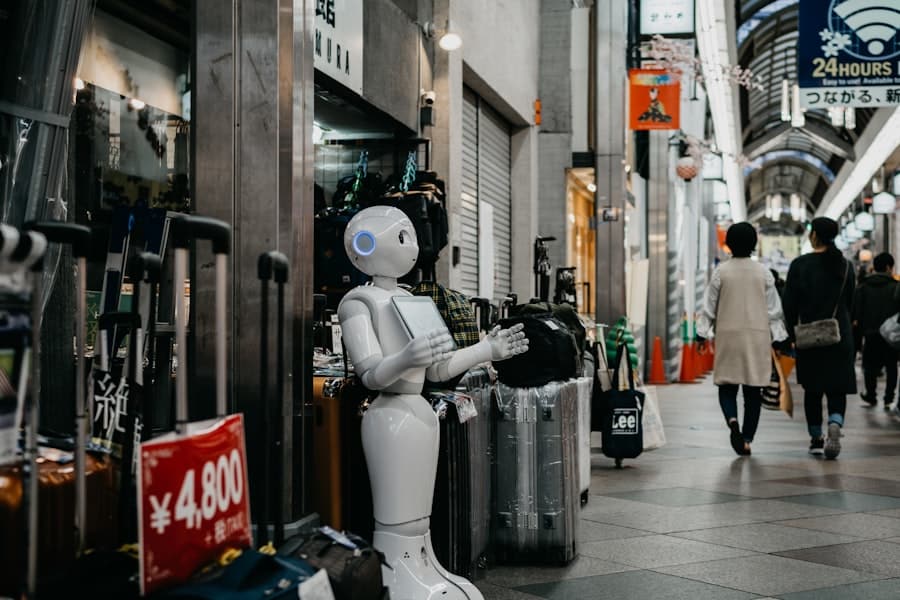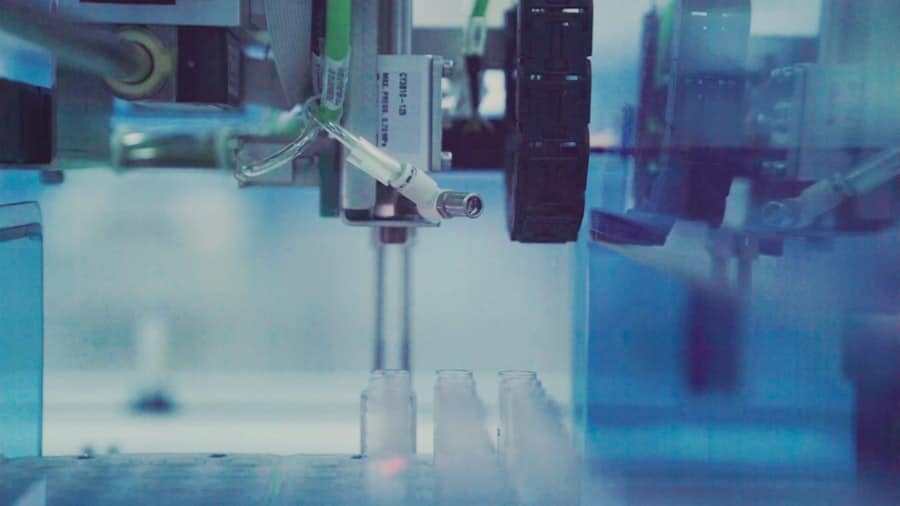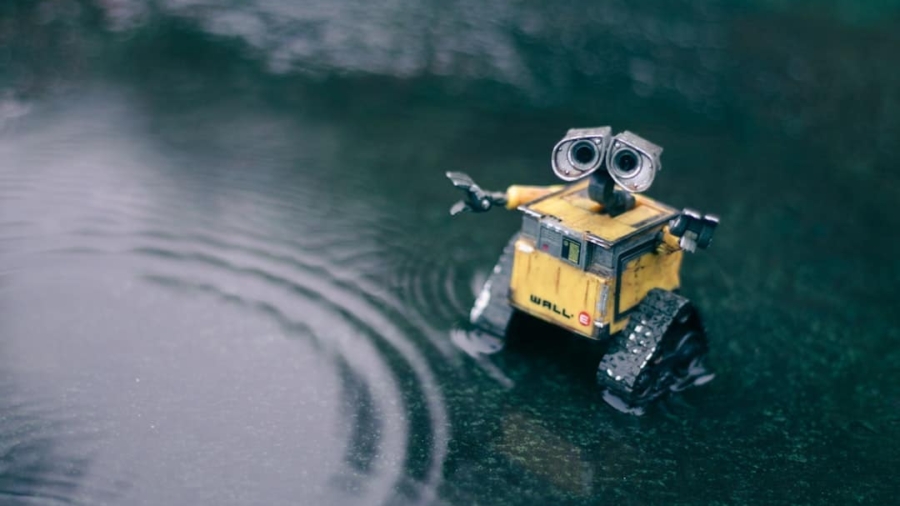The intersection of artificial intelligence and biological systems has given rise to a new class of machines known as biohybrid robots. These innovative entities combine living tissues with synthetic materials, creating a hybrid that can perform tasks in ways that traditional robots cannot. The integration of AI into these biohybrid systems enhances their capabilities, allowing them to adapt, learn, and respond to their environments in real-time.
This synergy between biology and technology not only opens up new avenues for exploration but also challenges our understanding of robotics and life itself.
For instance, researchers have developed robots that incorporate muscle cells from frogs or other organisms, enabling them to move in a manner similar to their biological counterparts.
When combined with AI algorithms, these robots can process sensory information and make decisions based on their surroundings, leading to more autonomous and efficient operations. This unique blend of biology and technology positions biohybrid robots as promising tools for various applications, particularly in exploration scenarios where adaptability and resilience are paramount.
Key Takeaways
- AI-driven biohybrid robots combine artificial intelligence and biological components for innovative exploration and research.
- Current applications of AI-driven biohybrid robots include deep-sea exploration, space exploration, and environmental monitoring.
- Advancements in AI and robotics technology are enhancing the capabilities and efficiency of biohybrid robots for exploration and research.
- Potential challenges and limitations of AI-driven biohybrid robots include ethical concerns, technical constraints, and environmental impact.
- Ethical considerations in the development and use of AI-driven biohybrid robots involve issues of autonomy, privacy, and potential misuse of technology.
Current Applications of AI-Driven Biohybrid Robots in Exploration
Environmental Monitoring
In the field of environmental science, these robots are used to monitor ecosystems and assess the health of various habitats. For example, biohybrid robots equipped with sensors can traverse wetlands or coral reefs, collecting data on water quality, temperature, and biodiversity. The ability to adapt to changing conditions allows these robots to provide real-time insights that are crucial for conservation efforts.
Deep-Sea Exploration
In the realm of deep-sea exploration, biohybrid robots have shown great promise in navigating the challenging underwater environment. Traditional robotic systems often struggle with the immense pressure and darkness of the ocean depths. However, biohybrid robots that utilize living tissues can better withstand these conditions due to their inherent biological resilience.
Advancements in Underwater Exploration
Researchers have developed prototypes that can swim using muscle contractions derived from living cells, enabling them to explore areas that were previously inaccessible. These robots not only gather valuable data about marine life but also contribute to our understanding of underwater ecosystems and their responses to climate change.
Advancements in AI and Robotics Technology for Biohybrid Robots

The rapid advancements in AI and robotics technology have significantly enhanced the capabilities of biohybrid robots. Machine learning algorithms, for instance, allow these robots to process vast amounts of data from their sensors, enabling them to identify patterns and make informed decisions autonomously. This level of intelligence is crucial for exploration tasks where real-time analysis is necessary.
Moreover, improvements in materials science have led to the development of more sophisticated synthetic components that can seamlessly integrate with biological tissues. Researchers are now able to create biocompatible materials that not only support the growth of living cells but also enhance the overall functionality of the robot.
This includes advancements in soft robotics, where flexible materials allow for more natural movements that mimic biological organisms. The combination of these technological advancements results in biohybrid robots that are not only more efficient but also capable of performing complex tasks in dynamic environments.
Potential Challenges and Limitations of AI-Driven Biohybrid Robots
Despite their promising applications, AI-driven biohybrid robots face several challenges and limitations that must be addressed for their widespread adoption. One significant challenge is the ethical implications surrounding the use of living tissues in robotic systems. The sourcing of biological materials raises questions about consent and the potential impact on ecosystems.
For instance, harvesting muscle cells from living organisms could disrupt local populations if not done sustainably. Researchers must navigate these ethical dilemmas while ensuring that their work contributes positively to both science and society. Another limitation lies in the technical complexities associated with integrating biological components with synthetic systems.
Maintaining the viability of living tissues within a robotic framework presents numerous hurdles, including issues related to nutrient supply, waste removal, and overall health monitoring of the biological elements. Additionally, the longevity and durability of biohybrid robots remain concerns; as living cells age or become damaged, the performance of the robot may decline. Addressing these challenges requires interdisciplinary collaboration among biologists, engineers, ethicists, and policymakers.
Ethical Considerations in the Development and Use of AI-Driven Biohybrid Robots
The ethical considerations surrounding AI-driven biohybrid robots are multifaceted and warrant careful examination. One primary concern is the moral status of the biological components used in these robots. As researchers increasingly utilize living cells or tissues, questions arise regarding the rights of these biological entities and whether they should be afforded any form of protection or consideration.
This debate extends beyond mere legal frameworks; it delves into philosophical discussions about what it means to be “alive” and how we define life itself. Furthermore, there are implications related to the potential misuse of biohybrid technology. As these robots become more advanced, there is a risk that they could be employed for harmful purposes, such as surveillance or military applications.
The dual-use nature of technology poses significant ethical dilemmas; while biohybrid robots can contribute positively to scientific exploration and environmental monitoring, they could also be weaponized or used in ways that infringe upon privacy rights or exacerbate social inequalities. Establishing ethical guidelines and regulatory frameworks will be essential to ensure that the development and deployment of these technologies align with societal values.
Future Implications of AI-Driven Biohybrid Robots for Exploration

The future implications of AI-driven biohybrid robots for exploration are vast and transformative. As technology continues to evolve, we can anticipate a new era of exploration characterized by unprecedented capabilities and insights into previously uncharted territories. For instance, biohybrid robots could play a pivotal role in space exploration by adapting to extraterrestrial environments that are inhospitable to traditional robotic systems.
Their ability to learn from their surroundings could enable them to conduct autonomous missions on planets or moons where human presence is limited. Moreover, the integration of AI-driven biohybrid robots into environmental monitoring efforts could revolutionize our approach to conservation. By deploying these robots across diverse ecosystems, researchers could gather comprehensive data on biodiversity changes over time, allowing for more effective conservation strategies.
The adaptability of biohybrid robots means they can respond dynamically to environmental shifts, providing real-time feedback that informs policy decisions aimed at mitigating climate change impacts.
Collaborative Efforts in Research and Development of AI-Driven Biohybrid Robots
The development of AI-driven biohybrid robots necessitates collaborative efforts across multiple disciplines. Researchers from fields such as robotics, biology, computer science, and ethics must work together to address the complex challenges associated with these technologies. Interdisciplinary collaborations can lead to innovative solutions that enhance the functionality and sustainability of biohybrid robots while ensuring ethical considerations are integrated into their design.
Institutions around the world are beginning to recognize the importance of such collaborations. For example, joint research initiatives between universities and private companies have emerged, focusing on creating biohybrid systems that can operate effectively in various environments. These partnerships facilitate knowledge exchange and resource sharing, accelerating advancements in technology while fostering a culture of responsible innovation.
By pooling expertise from diverse fields, researchers can tackle the multifaceted challenges posed by biohybrid robotics more effectively.
Conclusion and Outlook for the Future of AI-Driven Biohybrid Robots
As we look toward the future of AI-driven biohybrid robots, it is clear that they hold immense potential for transforming exploration across various domains. The combination of biological systems with advanced robotics offers unique advantages that traditional machines cannot replicate. However, realizing this potential requires addressing ethical concerns, technical challenges, and fostering collaborative research efforts.
The ongoing evolution of AI technologies will likely lead to even more sophisticated biohybrid systems capable of performing complex tasks autonomously while adapting to dynamic environments. As researchers continue to push the boundaries of what is possible with these technologies, society must engage in thoughtful discussions about their implications and ensure that their development aligns with our collective values and aspirations for a sustainable future. The journey into this new frontier promises not only scientific breakthroughs but also profound questions about our relationship with technology and life itself.
If you are interested in the latest technology trends, you may also want to check out The Ultimate Guide to the Best Screen Recording Software in 2023. This article provides valuable insights into the top screen recording software options available in the market, which can be useful for various purposes such as creating tutorials, recording gameplay, or capturing online meetings. Stay informed about the latest tech tools and enhance your digital skills with this comprehensive guide.
FAQs
What are AI-driven biohybrid robots?
AI-driven biohybrid robots are a new class of robots that combine biological components, such as living cells or tissues, with artificial intelligence (AI) to perform tasks. These robots are designed to mimic the behavior and capabilities of living organisms while being controlled by AI algorithms.
How are AI-driven biohybrid robots used for exploration?
AI-driven biohybrid robots are being developed for exploration in various environments, including underwater, space, and hazardous terrains. These robots can navigate and adapt to complex and unpredictable environments, making them suitable for tasks such as search and rescue, environmental monitoring, and space exploration.
What are the advantages of using AI-driven biohybrid robots for exploration?
AI-driven biohybrid robots offer several advantages for exploration, including their ability to self-repair, self-replicate, and adapt to changing conditions. They can also leverage the intelligence and decision-making capabilities of AI to autonomously navigate and perform tasks in challenging environments.
What are the potential applications of AI-driven biohybrid robots for exploration?
The potential applications of AI-driven biohybrid robots for exploration are diverse and include tasks such as deep-sea exploration, planetary exploration, environmental monitoring in remote or hazardous areas, and disaster response. These robots could also be used for medical applications, such as targeted drug delivery or tissue repair.
What are the challenges in developing AI-driven biohybrid robots for exploration?
Challenges in developing AI-driven biohybrid robots for exploration include ensuring the compatibility and stability of biological components with AI systems, addressing ethical and safety concerns, and developing robust control and communication systems for autonomous operation in remote or extreme environments. Additionally, there are challenges related to scalability, energy efficiency, and long-term reliability.

